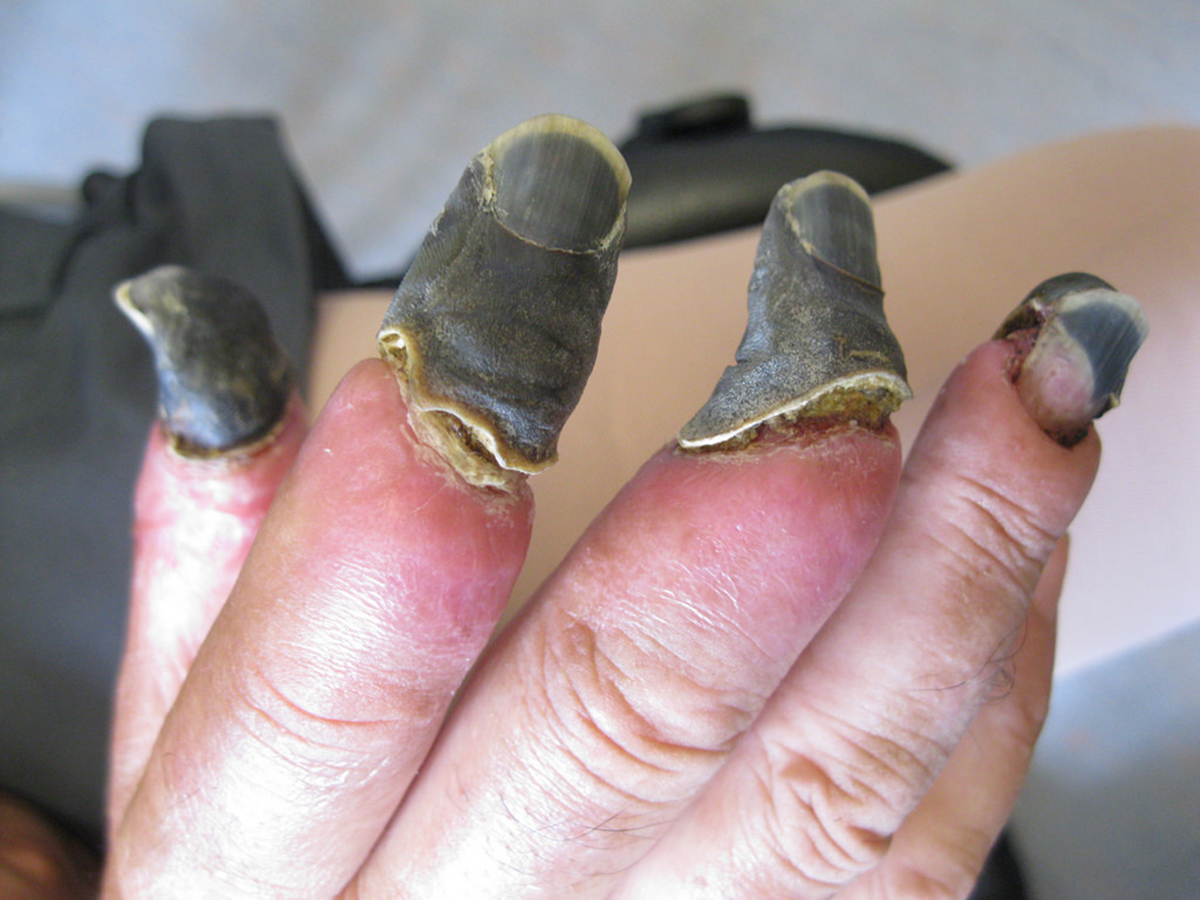Table of Contents
Sepsis, septicemia, and septic shock are a lot more common in older people (over 50, and especially over 60), than in younger people. These conditions are more common in men than in women. About twice as many men develop sepsis as women. In the United States, sepsis is particularly common among African-American men.
Black men have less access to health care, and get more infections that can "go septic." A distressingly common scenario is something like this. Non-cancerous prostate disease interferes with urination. A bladder infection gets trapped, and either an injury (a fall, for instance) or a medical procedure intended to diagnose the problem punctures the lining of the bladder. The infection spreads into the abdominal cavity, and because the man does not have ready access to health care, sepsis sets in and is not treated in a timely fashion. (This doesn't happen only to African-American men. My American friend Robert Rister's father, who was white, died of this kind of sepsis.)

African-Americans of both sexes are more likely to have diabetes and chronic kidney disease, which increase the likelihood of sepsis.
Is Sepsis Survivable?
Europeans die of sepsis more often than Americans, because they usually get treatment later. In Europe, about 50 percent of people admitted to hospital die of the disease. In the US, about 76 percent of sepsis patients survive. In Australia and New Zealand, survival rates are even better, over 80 percent. Sepsis is always a difficult disease, however, and hospital stays of months, not just weeks or days, are commonplace. What is more, people who have had sepsis remain at a higher risk of dying even once they are released from the hospital.
What Can You Do To Prevent Sepsis?
It is unusual for people under the age of 50 to develop sepsis, When this happens, usually there has been an infected wound. Someone kayaking or canoeing who suffers a compound fracture (broken bone breaking through the skin) in bacteria-contaminated water, for example, might develop sepsis. Severe injuries under extremely unsanitary conditions can result in sepsis.
READ Osteomyelitis: Bone infection
For older persons, it is much easier to control the risk factors for sepsis.
- Contaminated catheters are a common cause of infection. Don't ever reuse catheters if you do not have to, and never reinsert a catheter that has fallen on the floor or, even worse, into dirt or debris. Older people who cannot remember why they have a catheter may need to be monitored constantly to ensure safety around this medical device.
- Bed sores are another common source of sepsis. It is important to make sure that the patient changes position every two hours, twenty four hours a day. The prevention of bed sores is easier with pressure relieving mattress pads and by making sure the head of the bed is never raised so high (more than 30 degrees) that there is pressure on the buttocks.
- Incontinence has to be managed properly to prevent infection. Diapers have to be changed promptly, without gentle but thorough cleaning and drying before a new diaper is put on. Catheters must be changed as often as the doctor prescribes.
- Any medical breathing devices (CPAP, devices for taking COPD medications, and so on) must be kept as germ-free as possible to prevent sepsis, to the contrary these life-saving devices can become bringers of death.
- Preventing sepsis is not easy, but it is easier than treating sepsis. Make sure you or your loved one gets medical attention as quickly as possible at the first sign of possible symptoms.
- Brun-Buisson C, Doyon F, Carlet J, et al. Incidence, risk factors, and outcome of severe sepsis and septic shock in adults. A multicenter prospective study in intensive care units. French ICU Group for Severe Sepsis. JAMA. Sep 27 1995. 274(12):968-74.
- Dellinger RP, Levy MM, Rhodes A, Annane D, Gerlach H, Opal SM, et al. Surviving sepsis campaign: international guidelines for management of severe sepsis and septic shock: 2012. Crit Care Med. Feb 2013.41(2):580-637.
- Mind map by SteadyHealth.com
- Mind map by SteadyHealth.com
- Photo courtesy of jcampbell104 via Flickr: www.flickr.com/photos/104346167@N06/16916332265


Your thoughts on this